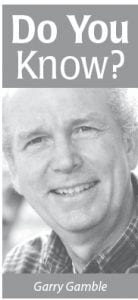There is any number of opinions as to why moose numbers are declining, and they’re all free for the taking. Just pick your particular preference and plop your posterior on a park bench somewhere in a pine forest and pontificate with your pals while you wait for the beast – with a penchant for palatable sprigs – to appear.
The problem with opinions, as John F. Kennedy observed, “Too often we…enjoy the comfort of opinion without the discomfort of thought”—facts and observations instead of agendas.
“Loyalty to petrified opinion never yet broke a chain or freed a human soul,” according to Mark Twain; and who wants to mess with the wit of a man who came into this world (and left it, as well) with a comet?
I’ve always had a keen interest in moose, which led me to take up moose shed hunting in the mid-’90s. I even explored the possibility of attending the 35th Annual North American Moose Conference and International Moose Symposia, which was held in Grand Portage in 1999. Unfortunately, I couldn’t work my schedule to fit the dates. When I called to inquire, explaining my predicament, they suggested I purchase the book, Ecology and Management of the North American Moose compiled by Charles C. Schwartz and Albert W. Franzmann, January 1998.
This is not your commonplace coffee-table book (although it could serve as a coffee table, itself). While written for scientists, most of the book is still quite readable for the layperson and explains moose biology and ecology and accesses the increasingly complex enterprise of managing the species. Read this a few times and you’ll have a great appreciation and understanding of the moose’s world.
My introduction to shed hunting began in Ely, Minnesota where I stopped in at the DNR station (since relocated to Tower, Minn.) and spoke with Fred Thunhorst, who coordinated the annual moose surveys. I asked for any advice he might be willing to offer. He suggested I visit a fellow in Isabella who made it a practice to head into the woods – shed hunting – whenever he got into a disagreement with his wife. He evidently had been moose shed hunting for years and had quite a reputation for being successful as he had a rather large pole barn full of sheds. Made me wonder how often he got into spats with his wife if he had that many sheds? I later visited the moose man and witnessed for myself his collection. I must say, as a side note, I found his wife to be quite amiable. Hmm?
When I was privileged to serve as a county commissioner, I had the opportunity to engage in discussions with DNR Commissioner, Tom Landwehr and DNR Policy & Government Relations director, Bob Meier on the topic of moose management.
They both acknowledged Minnesota’s moose population has plunged roughly 60 percent, from 8,840 animals in 2006 to fewer than 3,500 in 2015.
As journalist Ron Schara, who has been sharing great outdoor experiences with his readers for nearly three decades, related in a Feb. 3, 2017 commentary titled, “Moose populations: The thick and thin of it,” “In 2009, a state Moose Advisory Committee report—after reviewing a range of moose topics—came to the conclusion that stress from global warming may be the primary reason for the decline, along with other causes of mortality, such as winter ticks, poor nutrition (a habitat issue) and a parasitic brainworm (carried by whitetail deer). The 45-page report made no mention of wolf or bear predation.”
In August of 2016 former commissioner Frank Moe and I drafted a resolution opposing the petition to list the U.S. population of northwestern moose under the Endangered Species Act.
In reading the July 9, 2015 petition, submitted on behalf of the Center for Biological Diversity (CBD) and Honor the Earth (a Native-led organization established by Winona LaDuke and Indigo Girls Amy Ray and Emily Sailers), Tara Easter, scientist for the CBD, references climate as an imminent threat to the moose population 141 times. Any reference to predation, which occurred 13 times, appeared only in the context of a “concept.” There is a notable difference between “inevitable” and “concept.”
I have found the study of predator / prey relationships to be one of the most controversial aspects of moose population dynamics.
In subsequent columns I will enlist the “moose sense” of others in an attempt to move beyond the theories, fuzzy notions, speculation, sentiment and assumptions about why the moose population is declining.
And, while I confess (to no one’s surprise) I’m no scientist, I did read Dr. Seuss’s book about the big-hearted moose Thidwick, which is certainly in my neck of the woods.
Former Cook County Commissioner Garry Gamble is writing this ongoing column about the various ways government works.



Loading Comments